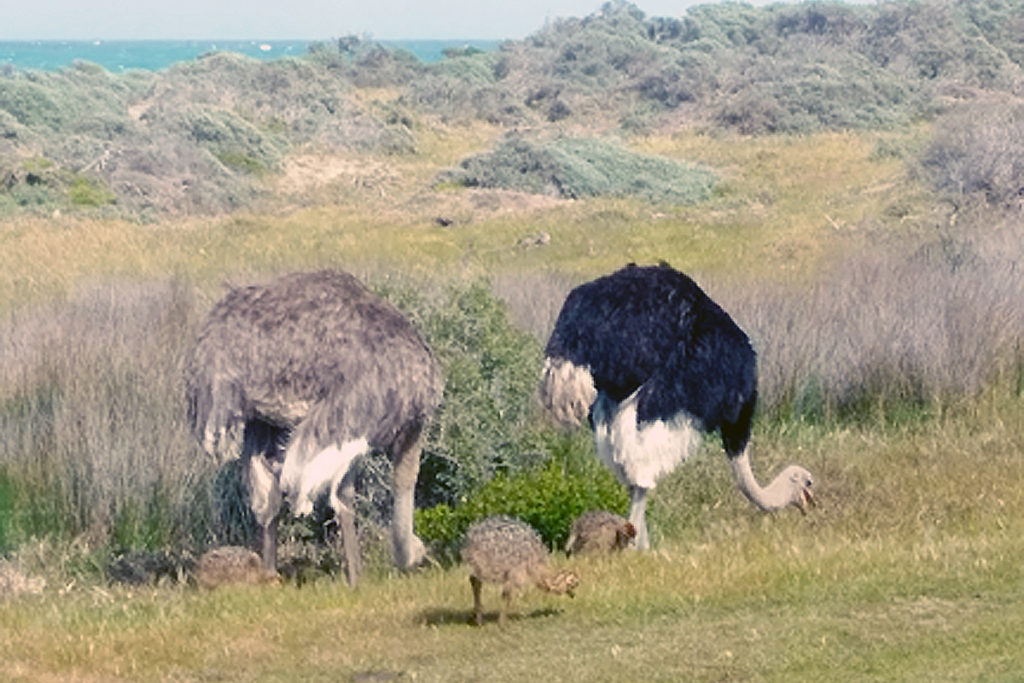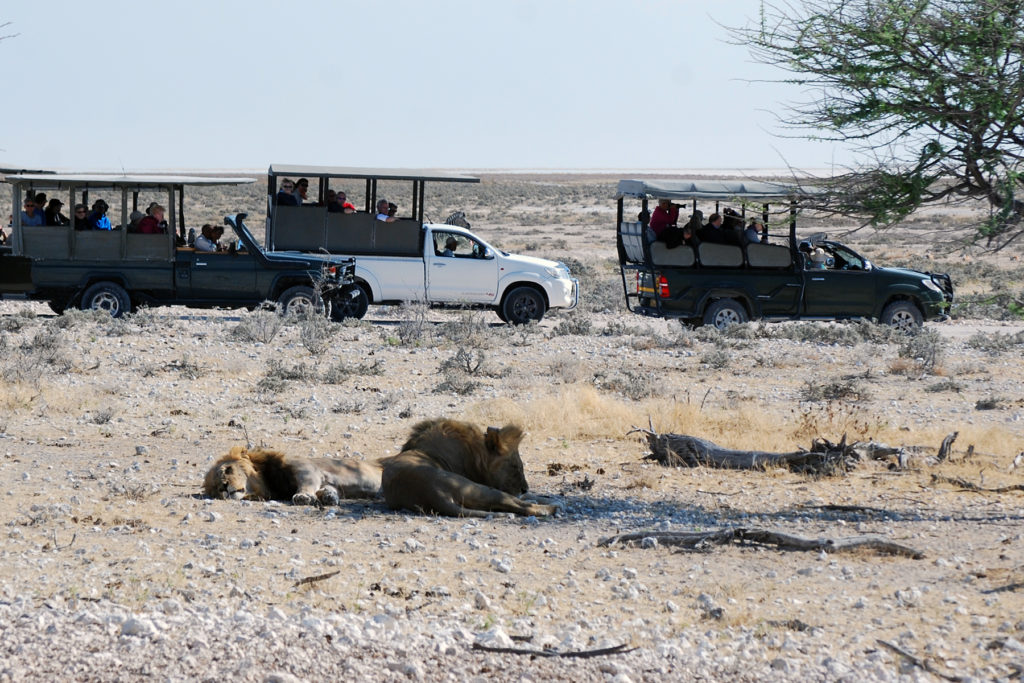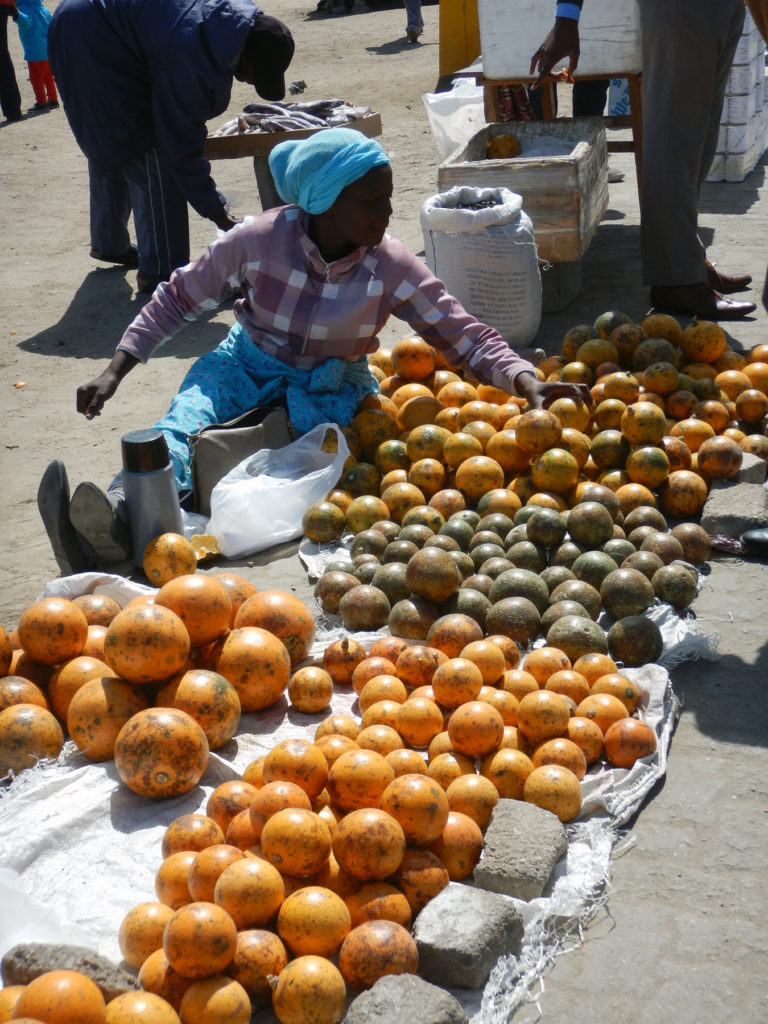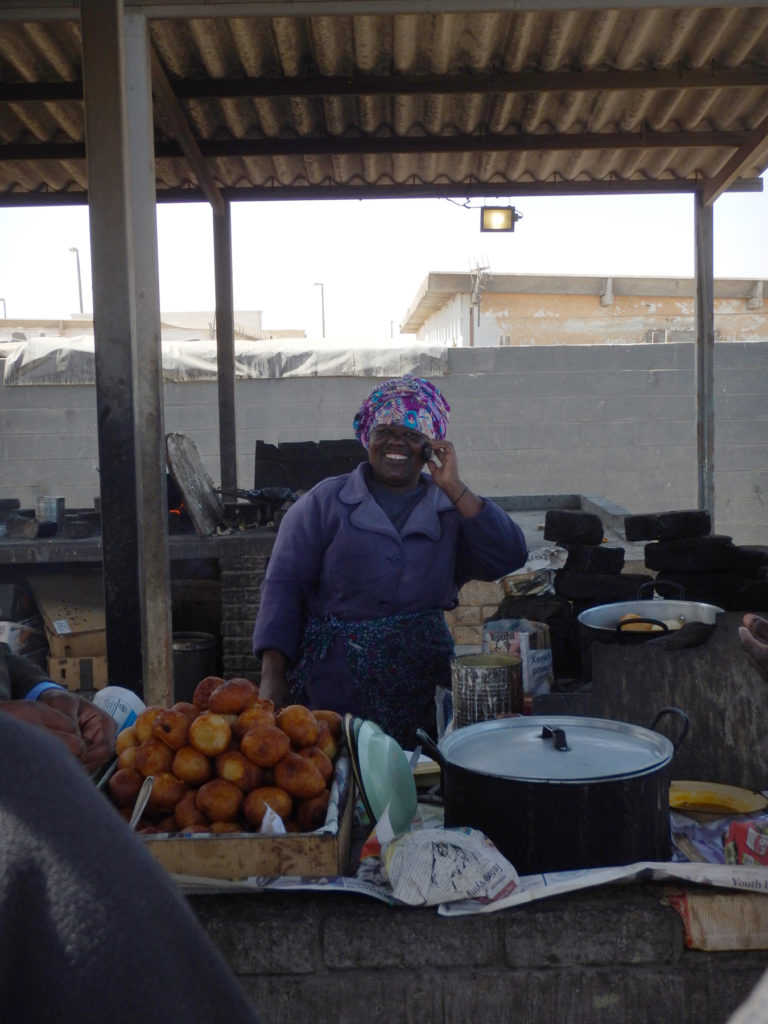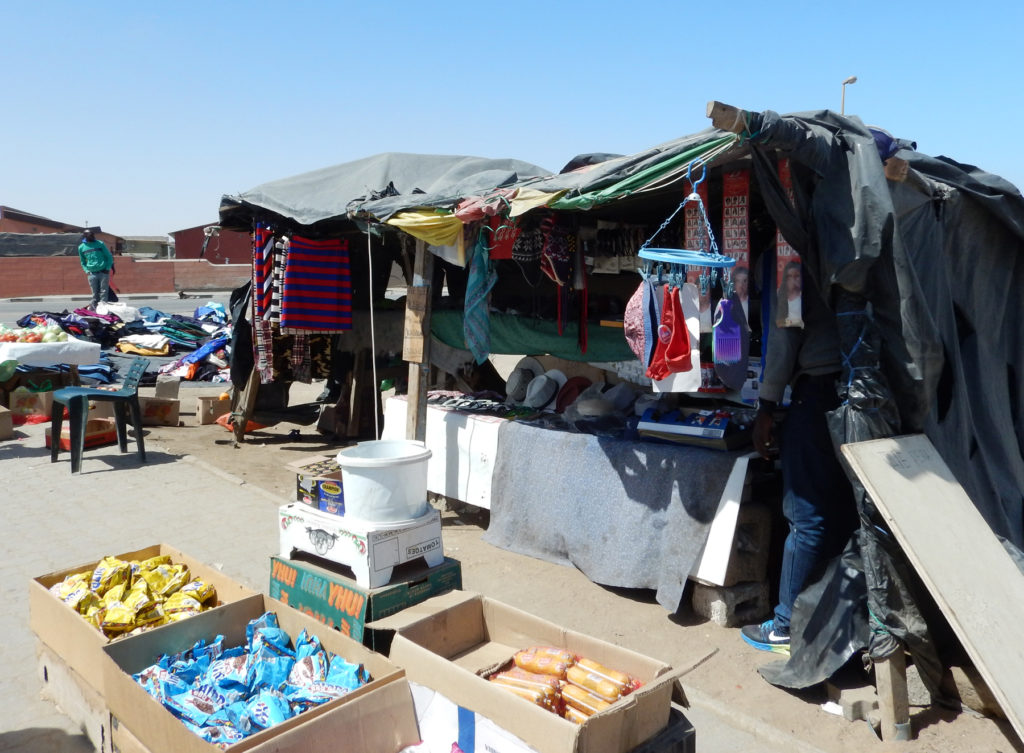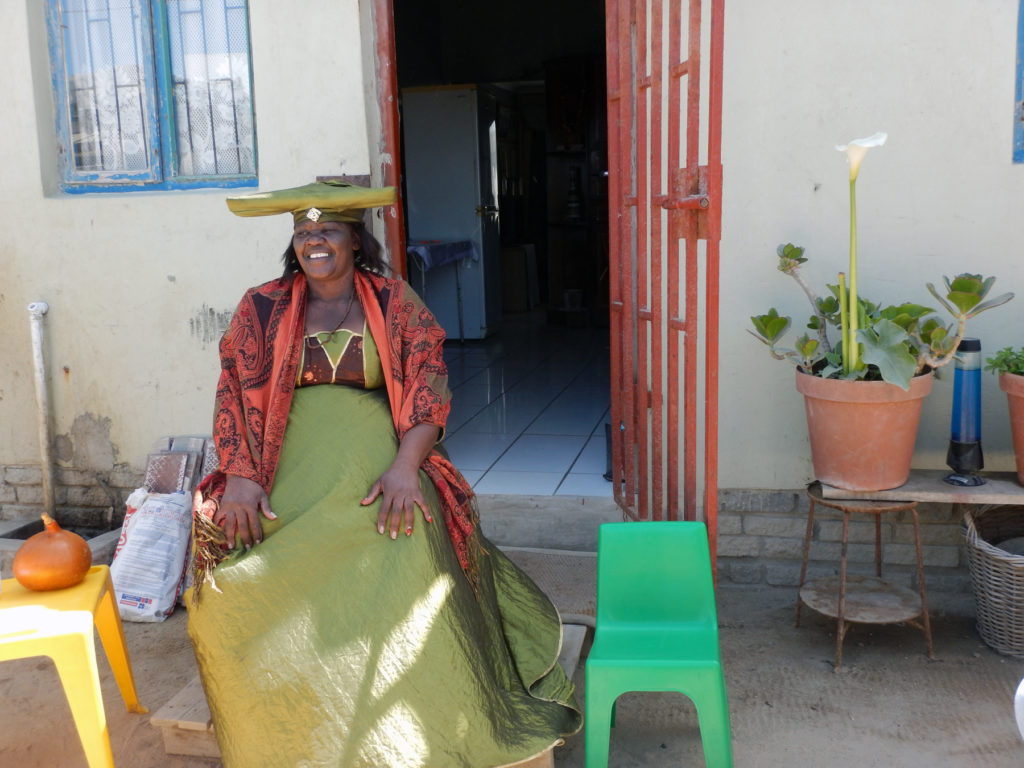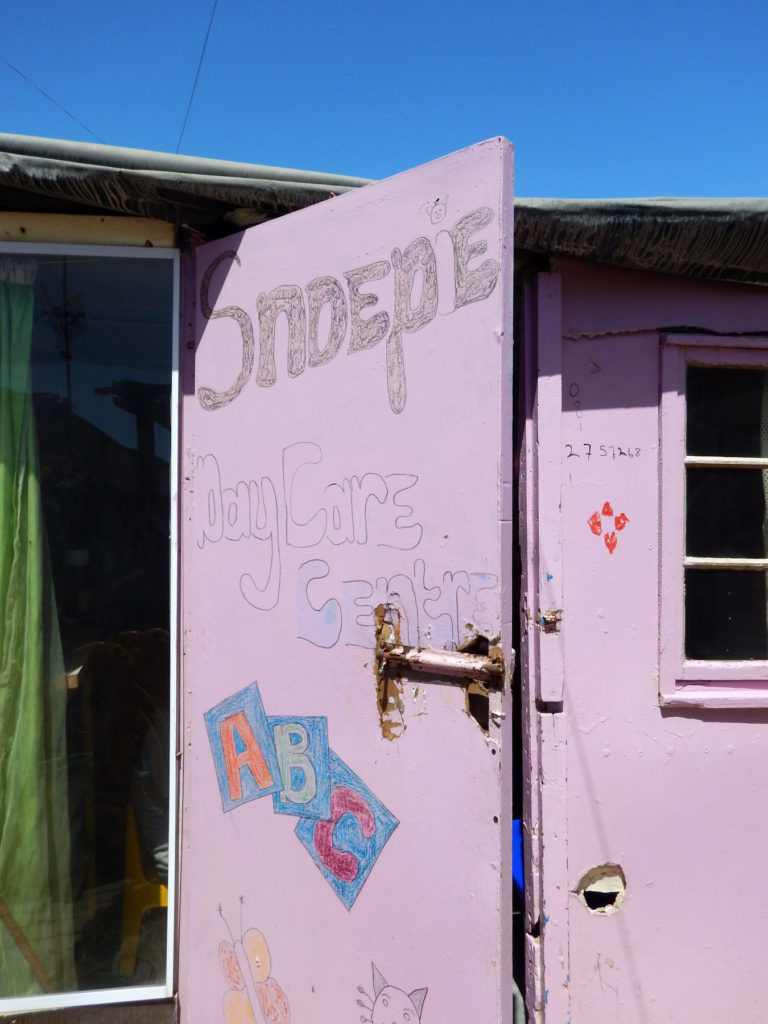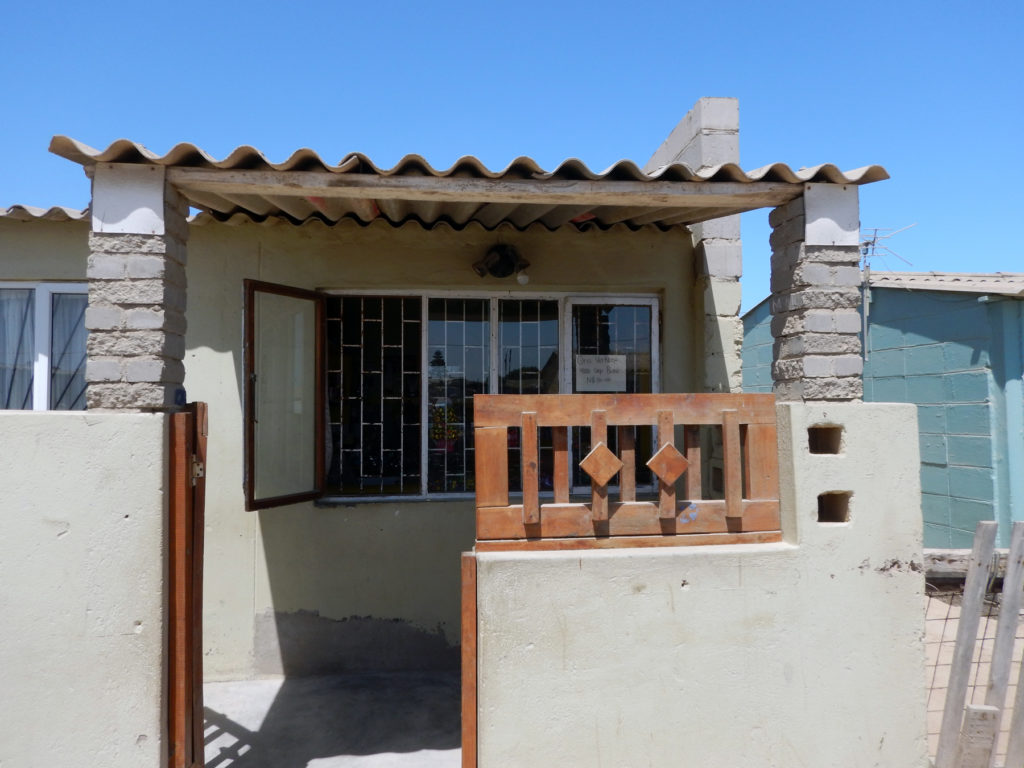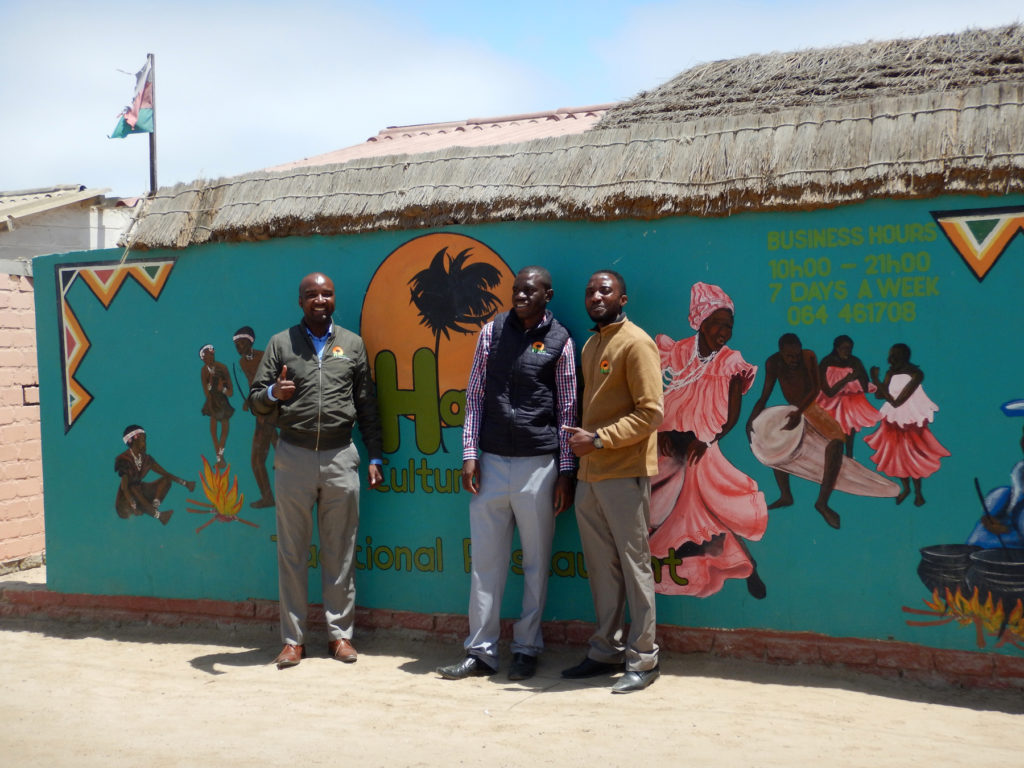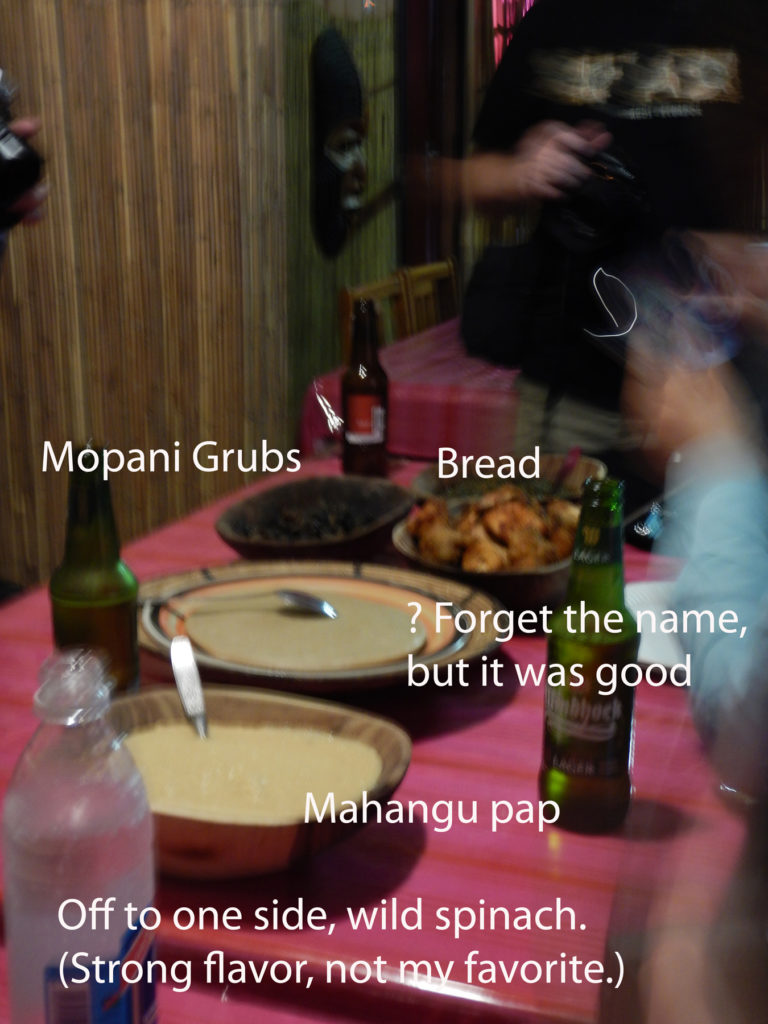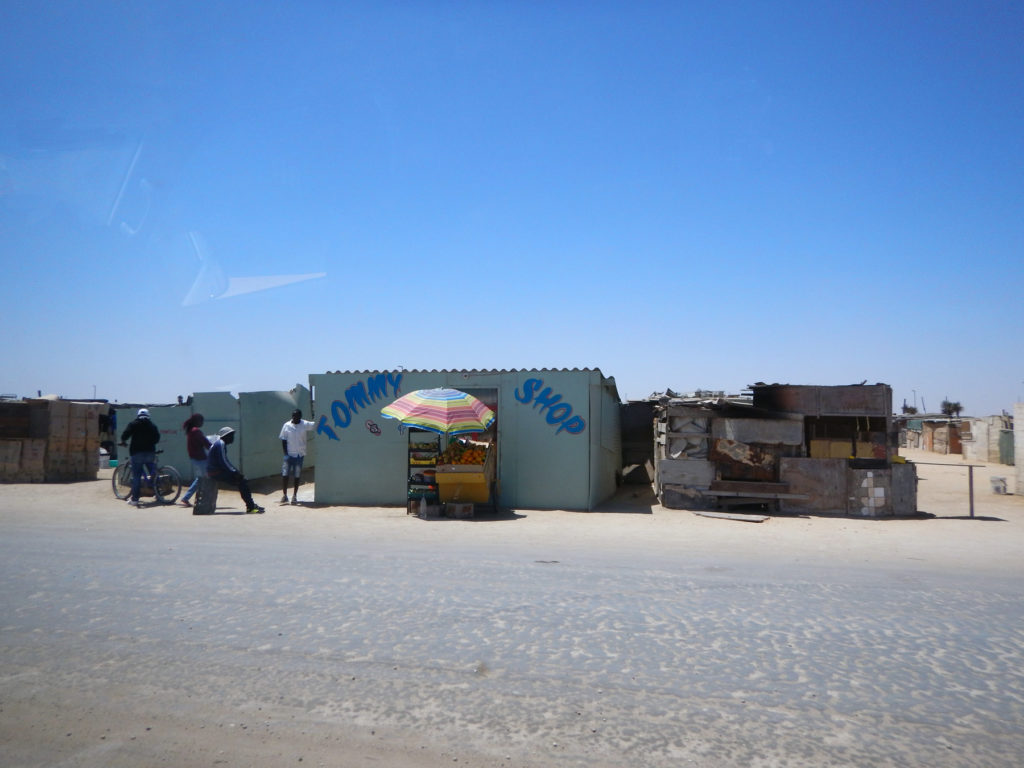Large game animals get all the ink, but it’s fun to watch African birds, too. Like ostriches.
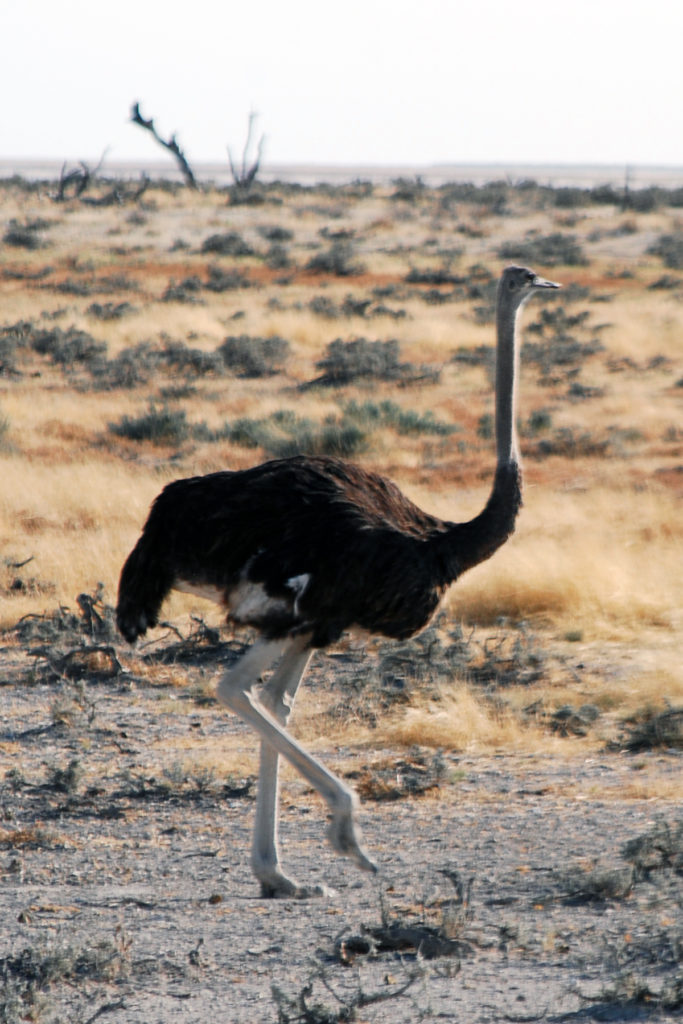
Ostriches travel in flocks, heads bobbing, knees bending backwards. Because they are so tall – they can grow to 8 feet – and so heavy – over 300 pounds – they can’t fly. Lack of flight doesn’t make them easy prey, though. They can run at speeds of 40 mph when startled, and they can generally outrun most predators. When they have to fight, though, they have a powerful kick. Their 4-inch talons can cause serious damage.
Another way ostriches avoid predators is to lie very still on the ground, with their legs under their dark body and their light-colored neck and head stretched out flat on the sandy ground. From a distance, the animal looks like a dark rock. This behavior has been inaccurately described as burying its head in the sand.
Ostriches have keen hearing and eyesight, which helps them avoid predators. They often travel with zebras, impalas, and other animals, sharing their diet of plants and bugs and serving as lookouts. When ostriches sense danger and run, the other animals notice and respond.

It’s not easy to be an ostrich. Taller than everyone else, heavy, awkward in motion, with actions that are often misunderstood, ostriches are kind of dorky. But they’re good to those around them, alerting others to danger and otherwise minding their own business. Sounds like some people I know.
So be good to your dorky friends. They have their own unique beauty, and they deserve a little respect.
